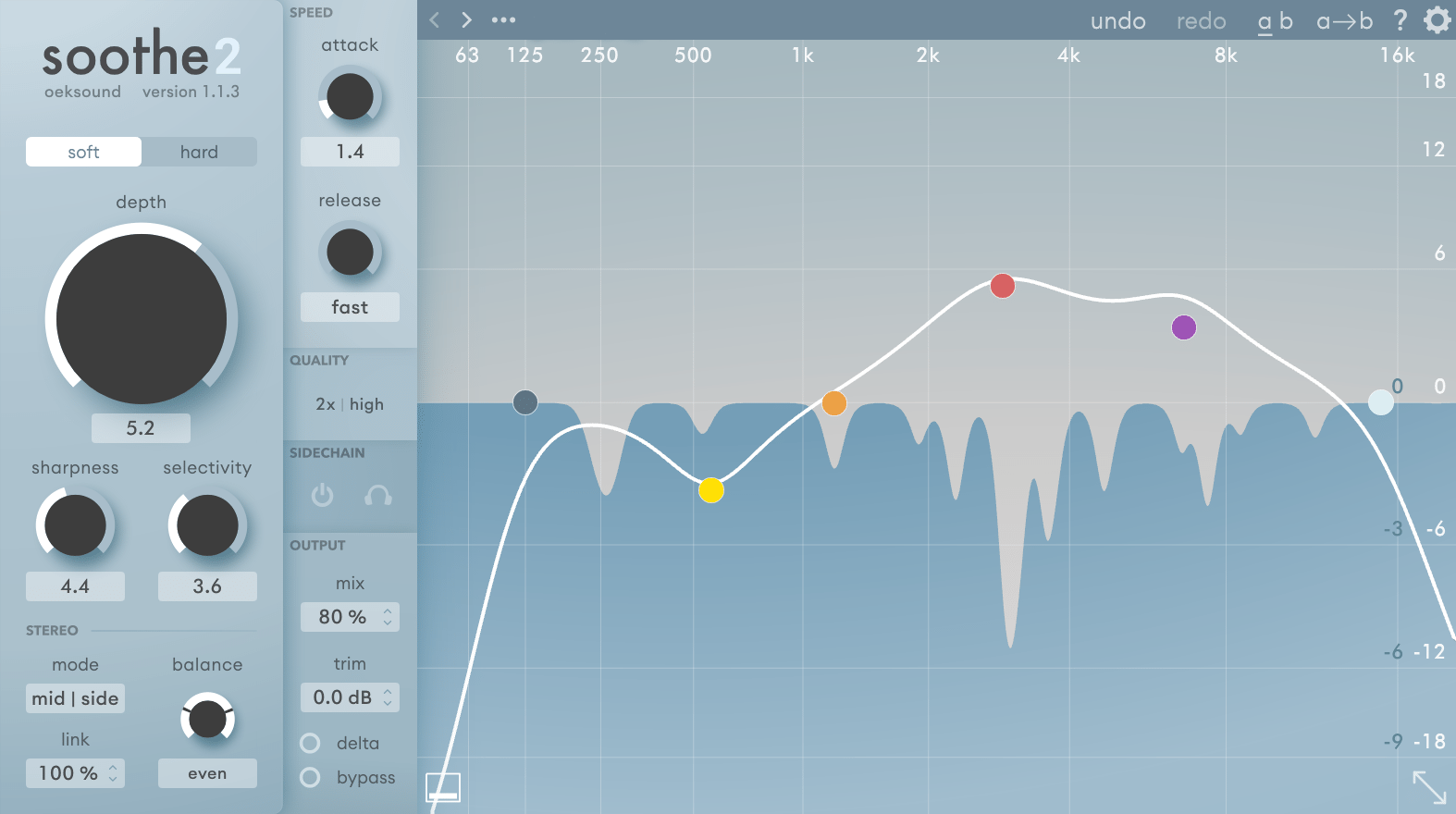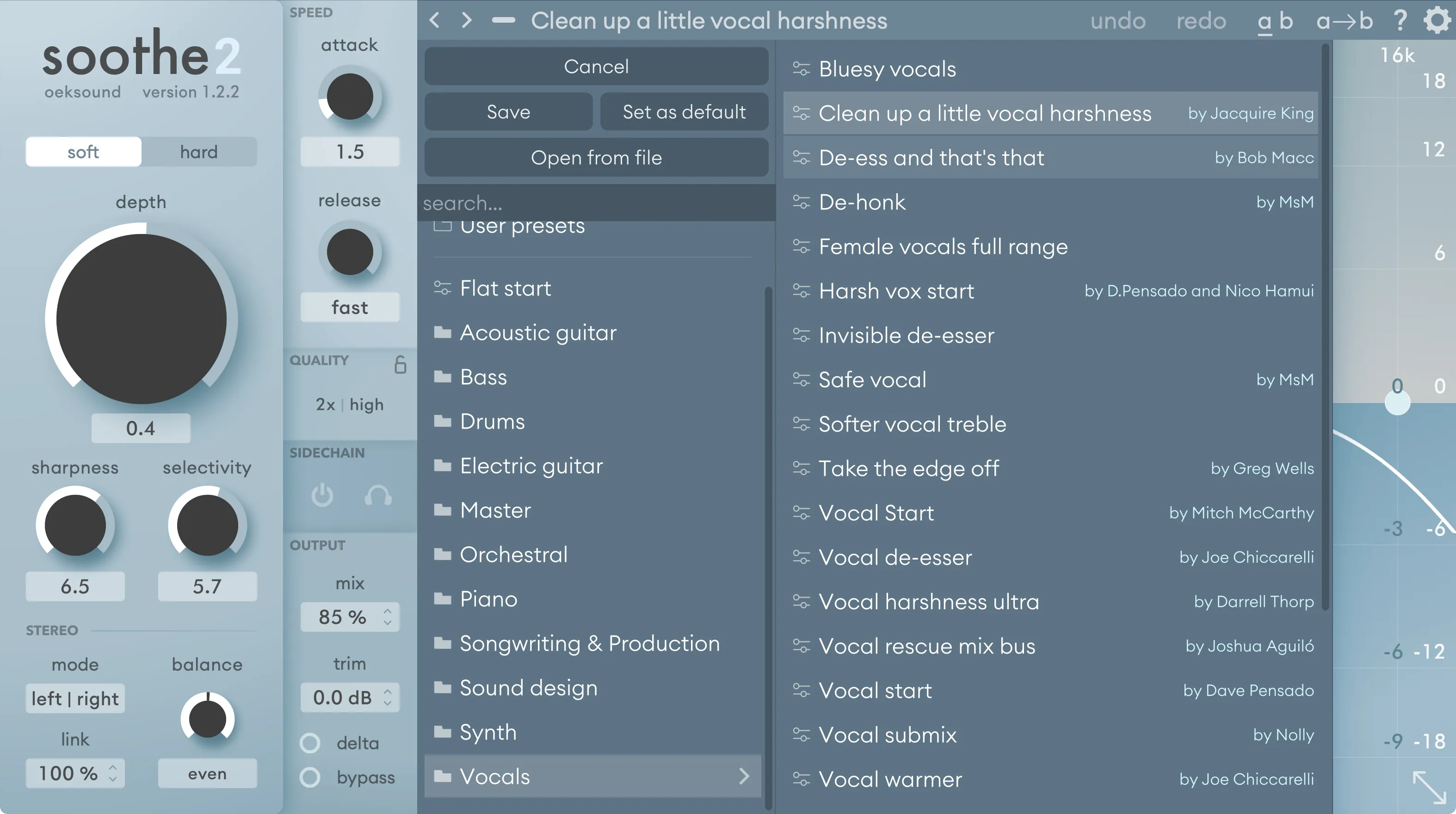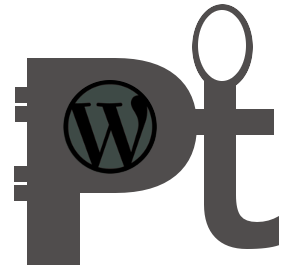Search Topic
What Makes a Great VST Plugin in 2025?

Here’s a detailed guide to the best VST plugins in 2025 — what to look for, why they matter, and several standout picks to consider. Whether you’re producing on your own in a home studio or mixing tracks professionally, these tools will reflect the state of the art in plugin design right now.
Before we get into individual plugin suggestions, it helps to know what criteria define a “best” plugin today:
1. Quality of sound and algorithmic innovation
Top-tier plugins are no longer just “digital copies” of hardware — many now use advanced DSP (digital signal processing), spectral methods, adaptive/resonance suppression, neural modelling, or hybrid analog-modelling techniques.
For example: the plugin Soothe 2 by oeksound uses dynamic resonance suppression to detect and reduce harsh frequency buildups automatically.
2. Workflow & ease of use
Even the best algorithm won’t get used if it’s difficult to integrate. A good plugin now should allow fast results, intuitive controls, and efficient CPU usage.
As one user put it (about Soothe 2):
“This is a life-saver plugin … I often have 100+ tracks and that is still a lot to deal with on a deadline.”
3. Compatibility and future-proofing
With evolving DAWs, operating systems (macOS, Windows, Apple Silicon, etc.), and formats (VST3, AU, AAX), a plugin that stays up-to-date matters.
Also, formats like CLAP (an open-source plugin format) are emerging.
4. Versatility & specialized use
There’s no one-plugin-fits-all. Some plugins excel at mixing/mastering, some at creative sound design, some at instrument emulation. Choosing according to your role matters.
5. Value and ongoing support
With plugin bundles, updates, trial versions, and developer support, the ecosystem around the plugin is often as important as the plugin itself.
📌 Top Plugin Picks for 2025
Here are five standout plugins (instrument or effect) that reflect excellence in 2025 — you should evaluate them against your workflow and budget.
1. Soothe 2 (oeksound)



What it does: A dynamic resonance suppressor. It scans the signal in real time, detects problematic resonances and automatically reduces them — sparing you the manual notches and EQ sweeps.
Why it stands out: Many engineers regard it as a “desert-island” plugin for mix cleanup. One reviewer called it “what used to take a chain of plugins and hours of listening … is fixed within minutes”.
Considerations: Powerful, but you’ll still want to know how to adjust attack/release/selectivity for best results. Also check compatibility with your system (e.g., iLok requirements).
When to use: On vocals, overheads, acoustic instruments, any track where harshness or resonant buildup is a problem.
2. MicroShift (Soundtoys)



What it does: A stereo-widening effect using pitch shifting and delay to make instruments or vocals sound wider and more spacious. ([Soundtoys][5])
Why it stands out: Simple interface but effective results; especially useful for vocals, guitars, synth pads that need width without getting messy.
Considerations: As with any width effect, too much can reduce mono-compatibility or coherence. Be judicious.
When to use: On backing vocals, synths, guitars, or any part of the mix that needs “spread” without losing focus.
3. (Bonus effect) Emerging plugins & formats
While not a single plugin, it’s worth noting the trend: new plugins with innovative interfaces and workflows are being released regularly. For example: the plugin FXEQ by iZotope lets users “paint” effects (saturation, delay, reverb) across frequencies in an intuitive way. ([MusicRadar][6])
Why this matters: It shows where the plugin world is going — more intuitive, more creative, less purely “technical” workflow.
Considerations: These newer plugins may have fewer established user-cases, less documentation, or less long-term track record.
🧭 How to Choose for Your Needs
Since “best” depends a lot on your role and budget, here are questions to ask yourself:
- Are you producing / composing / sound design or mixing/mastering?
If mixing, tools like Soothe 2 matter. If creative sound design, widening tools like MicroShift or instrument plugins could be more relevant. - What is your DAW and system? (Windows/macOS, CPU, plugin format)
- How often will you use the plugin? Is it specialized or “general-purpose”?
- Can you demo it? Many plugins offer trial versions — helping you see if the workflow fits you.
- What’s the budget and value over time? Consider updates, bundle deals, future proofing.
✅ Final Thoughts
The landscape of VST plugins in 2025 is rich and competitive. The best plugins combine *excellent sound quality, **efficient workflow, **robust compatibility, and *creative potential.
For many workflows:
- Soothe 2 is a very strong investment for mix/match engineers.
- MicroShift is ideal when you need width and polish on fewer tracks.
- Keep an eye on newer and more creative-oriented plugins as the field evolves.








